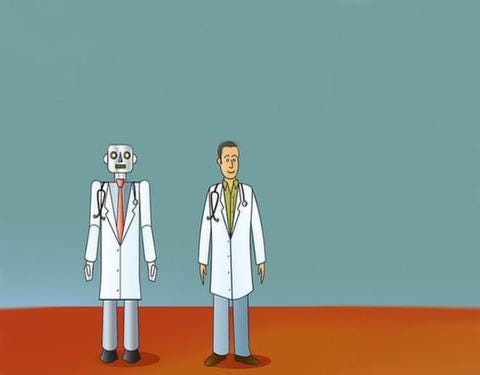GPS Cuts Fraud, Costs For Home Healthcare
GPS-based electronic visit verification products such as Axxess and Celltrack help ensure caretakers actually visit patients' homes.


10 More Robots That Could Change Healthcare
10 More Robots That Could Change Healthcare (Click image for larger view and slideshow.)
Now that more sick and disabled Americans live at home, payers and operators of residential healthcare providers are increasingly turning to technology to reduce fraud and ensure patients receive the care they need.
Nationwide, medical fraud costs tens of billions of dollars -- and home health fraud drains billions from the country's economy, said John Olajide, CEO of Axxess, in an interview. He's not exaggerating: Fraud and abuse in healthcare cost about $75 billion annually, according to the Institute of Medicine. The cost to untended patients can be immeasurable.
In 2012, Dr. Jacques Roy was charged with reportedly bilking $375 million from Medicare, in part by certifying more than 5,000 patients unnecessarily required home healthcare compared with the average of 104 for most physicians. About a year ago, Roberto Marrero pleaded guilty to, among other things, billing Medicare for therapy and other services that home-health patients did not need or receive, the IRS reported. In September, six south Florida residents were indicted for allegedly soliciting and receiving kickbacks from a now shuttered home-health agency.
[Read how tech is attacking Ebola: Real-Time Analytics Can Help Stop Ebola.]
Sometimes, it's individual employees, not organizations, who commit fraud, said Olajide, whose company develops electronic visit verification (EVV) solutions.
"These are all individuals taking advantage of lapses in the system. It's people taking advantage of loopholes in the system," he said. "They see opportunities to exploit..."
Government anti-fraud initiatives, task forces, and well-publicized campaigns that generated more than 1,000 convictions and $2 billion in recovered payments are cutting into fraud, said Olajide. And technologies that allow home health agencies to electronically monitor remote staff ensure better patient care, accurate billing, and compliance with payers' request for proof of service, he added.
That's why states like Texas and Illinois now mandate the use of electronic visit verification (EVV). The Illinois Department of Human Services Division of Rehabilitation Services, for example, began using EVV for its Home Services Program in January 2014. About 30,000 personal assistants will use the system, developed by Sandata, to serve 28,000 people with severe disabilities, the state said. In addition to tracking caregivers' location, it integrates with payroll and flags supervisors in cases of suspected neglect or abuse.
GPS-based electronic visit verification that integrates with payroll software quickly and automatically allows agencies to determine nurses' paychecks, Marvin Javellana, chief operating officer at Better Care Home Health, told InformationWeek. The four-year-old agency specializes in high-acuity patients, meaning daily care is critical to their health, he said. At a time when more patients are being treated at home, Medicare began lowering reimbursements, further spurring Better Care's interest in EVV, said Javallana.
"Now, when Medicare lowers your reimbursements you start to look at how to become more efficient," he said. "We really need to squeeze every single cent of what we're reimbursed. The adoption of this technology is not just about compliance. It's about survival. How are you going to survive in this industry right now if you're not efficient?"
GPS products also reduce caregivers' mileage, according to EVV developer Celltrak. After implementing CellTrak VisitManager, the Hospice of Cincinnati's staff managed more visits per location and staff safety improved, said Jeri York, master scheduler, in a statement.
Before Better Care used Axxess' EVV, nurses carried a timesheet for each patient, who was then asked to sign daily to confirm the nurse's visit. Nurses could, however, get patients to sign multiple days simultaneously, said Javallana. And caretakers could use voice over IP (VoIP) lines to pretend they were at a patient's home -- when they were actually far away, he noted.
The agency's EVV system, which runs as an app on an iPhone or Android, lets nurses log on only when they are near the patient. It's part of Axxess' electronic health record (EHR) and portal, so it automatically updates clients' vital statistics, photos, medications, signatures, and notes, further proving the nurse's presence, said Javallana.
"With a GPS solution, if you are not in that front door or a few hundred feet of that address, you cannot log in," he said.
The owners of electronic health records aren't necessarily the patients. How much control should they have? Get the new Who Owns Patient Data? issue of InformationWeek Healthcare today.
About the Author
You May Also Like






